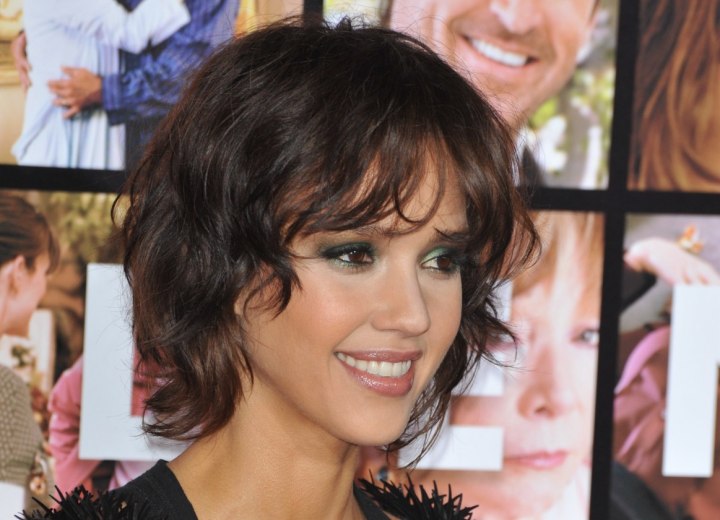Shag Haircut Definition

A: At its core, a "shag" haircut is defined by its signature shaggy, textured appearance, achieved through graduated layers that create movement and volume. The hallmark of a shag is its layered structure, where the hair is cut so that the shortest layers begin at the crown or top of the head and progressively lengthen toward the ends. This technique results in a feathered effect, giving the hair a lived-in, effortless vibe.
Interestingly, the same haircut can be known by entirely different labels depending on the era, cultural influences, or even geographic location. For example, when Stevie Nicks wore her iconic long, layered shag in the late 1970s and early 1980s, it was frequently referred to as a "gypsy cut"- a name inspired by her bohemian style and her hit song "Gypsy." Despite the different terminology, the cut itself retained the same fundamental layered structure.
Haircut names often shift over time, sometimes gradually and other times due to generational or regional trends. A classic example is the A-line bob, which transitioned from being called a "bob" to a "stacked bob" and eventually just a "stacked cut" as the style evolved. Similarly, the shag of the late 1960s - originally named for its messy, undone texture - took on new identities as fashion and pop culture influenced hairstyling trends.
Regional differences also play a role in naming conventions. The long, razor-cut layers made famous by Jennifer Aniston’s character Rachel on Friends in the 1990s went by multiple names: some salons called it "The Rachel," others referred to it as a "soft layer cut," and in certain areas, it was even labeled a "two-stage cut" due to its distinct, tiered lengths.
While using a haircut’s popular name can be helpful, the most reliable way to ensure you get the style you want is to provide a detailed description - whether that means specifying layer placement, length, texture, or styling techniques. Bringing reference photos can also be useful, as terminology varies widely between stylists and trends.
©Hairfinder.com
See also:
How to cut a shag
How to razor cut hair into a shag bob
What is the difference between a shag hairstyle and a layered hairstyle?
What products and items should I use to style a shag haircut?